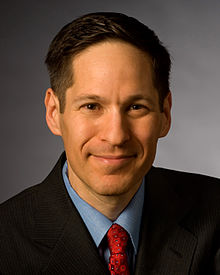Lyrica Not Effective for Treating Traumatic Nerve Pain
/By Pat Anson, Editor
Pregabalin is not effective in relieving chronic pain caused by traumatic nerve injury, but it may be useful as an analgesic in treating pain after surgery, according to a new study published in the Journal of Neurology.
The placebo-controlled study followed 539 patients in North America, Europe, Africa and Asia for three months. About half had nerve pain after surgery, while the rest had nerve pain after an accident or trauma.
Researchers found that pregabalin was not an effective pain reliever for the patients with traumatic nerve injuries, but the drug did provide better pain relief than placebo for the surgery patients.
"While these finding show that pregabalin is not effective in controlling the long-term pain for traumatic injury, it may provide relief for patients (that) experience post-surgical pain," said lead author John Markman, MD, director of the Translational Pain Research Program in the University of Rochester Department of Neurosurgery.
"The possibility that there was pain relief for those patients who had a hernia repair, or breast surgery for cancer, or a joint replacement lays the groundwork for future studies in these post-surgical syndromes where there is so much need for non-opioid treatments."
Pregabalin, which is sold by Pfizer under the brand name Lyrica, is FDA-approved for the treatment of chronic pain associated with shingles, spinal cord injury, fibromyalgia, and diabetic peripheral neuropathy.
It is also commonly prescribed as an "off label" treatment for other types of chronic pain and as an alternative to opioid medication.
A major challenge for doctors is that biological changes in nerves and other tissues while healing from surgery or trauma vary from one patient to the next. There is also no diagnostic method that allows doctors to identify which patients will respond to a particular type of pain treatment.
"Given the rising rates of surgery and shrinking reliance on opioids, it is critical that we understand how to study new drugs that work differently in patients like the ones included in this study," Markman added.
While critics often say there is little or no evidence to support the long-term use of opioids, the same is true for other types of pain medication, including pregabalin. Nevertheless, in its guideline for opioids, the Centers for Disease Control and Prevention recommends pregabalin and its chemical cousin gabapentin as alternatives for treating chronic pain – without even mentioning their side effects or potential for abuse.
Pregabalin and gabapentin belong to a class of nerve medication called gabapentinoids, which were originally developed to treat epilepsy, not pain. In recent, deaths involving gabapentinoids have increased in the UK, Australia and Canada, where some addicts have learned the drugs can heighten the euphoric effect of heroin and other opioids.
The use of pregabalin and gabapentin has tripled in the U.S. over the past decade, but health officials have only recently started looking into their misuse and abuse. While gabapentin has a warning label cautioning users who take the drug with opioids, there is no similar warning for pregabalin.






















